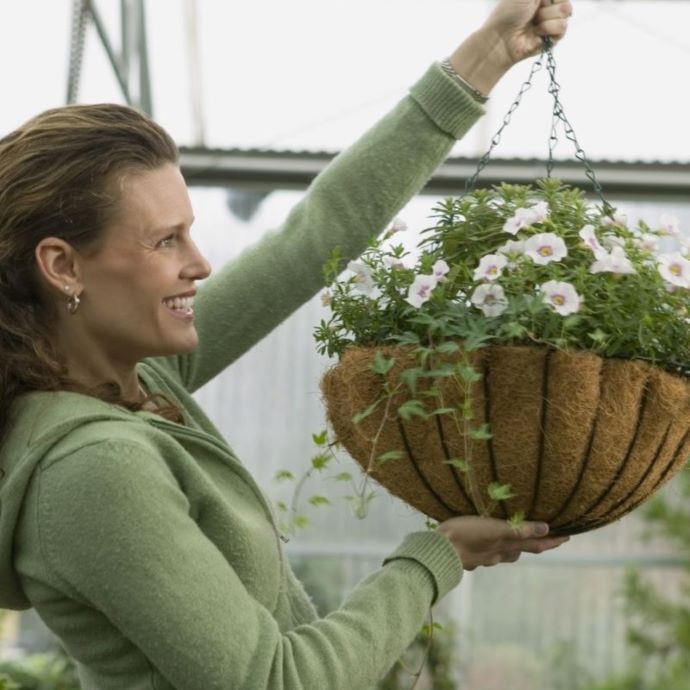Advice & Inspiration
Comfrey Plant: Natural Fertiliser, Compost and Mulch

Comfrey plants are a must-have for organic gardeners. From making your own comfrey fertiliser tea, to using the leaves to suppress those pesky weeds, there are so many ways you can use comfrey in the garden. But it’s not only the gardener that benefits. The pretty purple flowers feed the bees and other pollinator friends. Just one of many reasons to grow this versatile plant!
Now let’s unpack some of the easy ways Comfrey can be used in your garden…
Jump to:
- Making comfrey tea fertiliser
- Comfrey and compost
- Comfrey mulch
- Comfrey fertiliser vs other natural and artificial fertilisers
Making ‘comfrey tea’
Comfrey ‘tea’ is NOT FOR DRINKING. It is actually a natural fertiliser. Comfrey is harmful if consumed by people. But your plants, on the other hand, will love this feed. Comfrey roots reach nutrients deep in the ground and store these in their leaves, making them perfect in a DIY feed compared to plants with shallow roots.
Making the fertiliser tea is simple using established plants. But if you have recently purchased comfrey plants, they may need some time to grow on. Gardeners World has an excellent tutorial on making comfrey feed. If you are lucky you may have everything you need, making it totally free. What a result! But, be warned it can smell as bad as a festival toilet…
In a nutshell, there are 5 simple steps to make comfrey tea.
- Wearing protective gloves, harvest leaves from your comfrey plant.
- Chop them up and place in a container with a lid.
- Fill with water, using something heavy like stones or bricks to stop all the leaves floating to the surface.
- Leave covered for around 3 weeks (this is when things get smelly).
- Strain the liquid and dilute with water, in a ratio of 1 part comfrey feed to 10 parts water.
Et voila! Your very own comfrey tea. Although stinky, this comfrey tea is liquid gold for your plants.

Comfrey and compost
If you’ve already made the comfrey tea, then you’re ahead of the game. Comfrey tea can also be poured into your compost pile to accelerate the composting process. However, for those who may not enjoy the ‘fragrance’ of comfrey tea, thankfully there is a quicker and less smelly method to speed up composting.
You can simply add comfrey leaves and stalks directly into your compost bin. Comfrey leaves are richer in nutrients than many plants due to their deep roots. Comfrey leaves also boast high levels of potassium, nitrogen and phosphorus, which are probably the three most important nutrients for plant feed. Meaning this method will give your compost a mighty boost, with minimal effort from you. Easy peasy. All you need are some comfrey plants and a compost pile. If you don’t make your own compost already, learn how with our easy guide. And you should be on your way to lush nutrient-rich compost in no time!

Comfrey mulch
Another super simple use of comfrey leaves is as a mulch. Place cut leaves on exposed soil in beds and pots, especially at the base of plants. This has three main benefits:
- The leaves reduce weed growth on the covered areas.
- The leaves help slow water loss from the soil.
- Over time the leaves rot down releasing their nutrients into the soil, feeding your plants.
In my opinion this is the best use of comfrey in the garden and the least smelly. It is especially useful around hungry plants like tomatoes, which enjoy a good feed. If you prefer you can bury the leaves into beds and containers, rather than placing them on the surface. This might be worthwhile for those who like to keep beds looking super neat and tidy. Although I don’t mind a slightly wilder look…
For you experts who already make leaf mould for mulching, adding comfrey leaves to your pile can improve the nutrient level. Helping to create a high quality natural mulch for future growing seasons.

Comfrey fertiliser vs other natural and artificial fertilisers
Comfrey as a fertiliser is cheap, easy to use and all-natural. If you are an organic gardener who enjoys a bit of DIY, I can’t recommend growing comfrey plants enough. Of course the main downside is the smell from comfrey tea. However, the other methods of composting comfrey, mulching and burying leaves are a fantastic, less stinky alternative. You can enjoy the benefits of Comfrey as a natural fertiliser, whilst still being able to inhale fresh air without pinching your nose. Bliss!
There are other natural fertiliser options such as horse manure. I use well-rotted manure to improve my soil. But it requires a lot of physical effort to collect, transport and spread. Using a plant-made natural fertiliser like comfrey in my opinion could be a nice alternative which requires less-physical labour.
Of course there are many artificial fertilisers available to buy and ready to use. However, compared to a potentially free comfrey tea feed, these could be more expensive. Artificial fertilisers can also contain chemicals, which are not organic gardener friendly. Heavy usage of these can cause serious damage to the environment. The RSPB recommends that we gardeners avoid using synthetic fertilisers at home in favour of organic alternatives. So comfrey fertiliser tea seems like a good option!




















